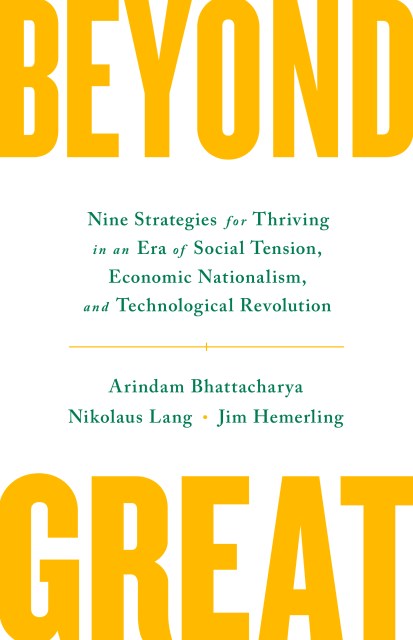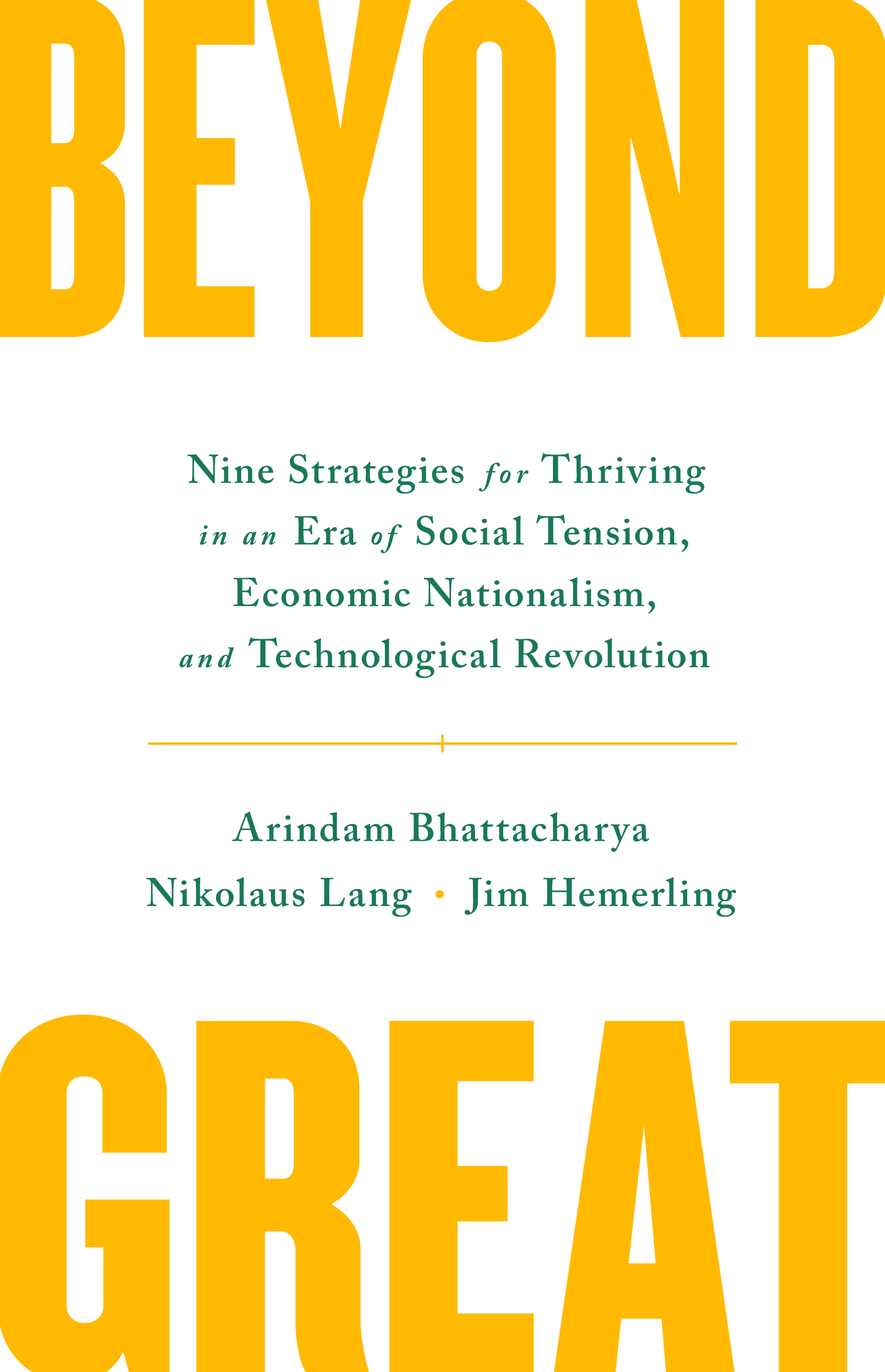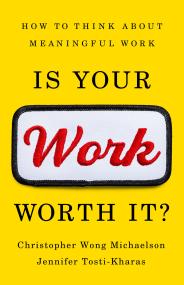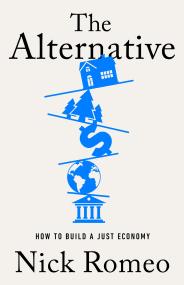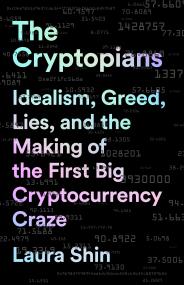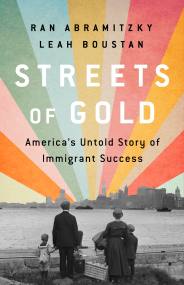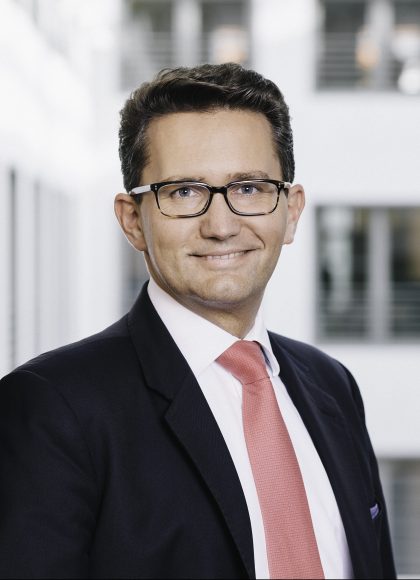Promotion
Use code MOM24 for 20% off site wide + free shipping over $45
Beyond Great
Nine Strategies for Thriving in an Era of Social Tension, Economic Nationalism, and Technological Revolution
Contributors
Formats and Prices
Price
$28.00Price
$35.00 CADFormat
Format:
- Hardcover $28.00 $35.00 CAD
- ebook $17.99 $21.99 CAD
- Audiobook Download (Unabridged)
This item is a preorder. Your payment method will be charged immediately, and the product is expected to ship on or around October 6, 2020. This date is subject to change due to shipping delays beyond our control.
Also available from:
Great is no longer good enough. Beyond Great delivers a powerful new playbook of 9 core strategies to thrive in a post-COVID world where all the rules of the game are being re-written.
Beyond Great answers to two fundamental questions which face business leaders today in a world shaped by daunting and disruptive technological, economic, and social change. First, what is outstanding performance in this new volatile era? Second, how do we build competitive advantage in a world with new and often uncertain rules? Supported by years of research and hands-on consulting practice, this book presents a comprehensive framework for building a high performing, resilient, adaptive, and socially responsible global company.
The book begins by taking an incisive look at these disruptive forces transforming globalization, including economic nationalism; the boom in data flows and digital commerce; the rise of China; heightened public concerns about capitalism and the environment; and the emergence of borderless communities of digitally connected consumers. Distilled from the study of hundreds of companies and interviews with dozens of business leaders, the authors have distilled nine core strategies – the new winning playbook of the 21st century.
Beyond Great argues that business leaders today must lead with a new kind of openness, flexibility and light-footedness, constantly layering in new strategies and operational norms atop existing ones to allow for "always-on" transformation. Leaders must master a whole new set of rules about what it takes to be "global," becoming shapeshifters adept at handling contradiction, multiplicity, and nuance. This book will show them how.
Beyond Great answers to two fundamental questions which face business leaders today in a world shaped by daunting and disruptive technological, economic, and social change. First, what is outstanding performance in this new volatile era? Second, how do we build competitive advantage in a world with new and often uncertain rules? Supported by years of research and hands-on consulting practice, this book presents a comprehensive framework for building a high performing, resilient, adaptive, and socially responsible global company.
The book begins by taking an incisive look at these disruptive forces transforming globalization, including economic nationalism; the boom in data flows and digital commerce; the rise of China; heightened public concerns about capitalism and the environment; and the emergence of borderless communities of digitally connected consumers. Distilled from the study of hundreds of companies and interviews with dozens of business leaders, the authors have distilled nine core strategies – the new winning playbook of the 21st century.
Beyond Great argues that business leaders today must lead with a new kind of openness, flexibility and light-footedness, constantly layering in new strategies and operational norms atop existing ones to allow for "always-on" transformation. Leaders must master a whole new set of rules about what it takes to be "global," becoming shapeshifters adept at handling contradiction, multiplicity, and nuance. This book will show them how.
Genre:
-
"COVID 19 dramatically exposed the fault lines emerging in our global society, leaving businesses to cope with thorny questions such as who are our real stakeholders, how to optimise digital technology, and what are the expectations from businesses. This book offers a timely and urgently needed strategic playbook that tackles some of these vexing issues of our times. It is replete with practical examples and a must read for any business person seeking to navigate an uncertain world."Anand Mahindra, Chairman, Mahindra Group
-
"Whether you're running an industrial company or a bank, a media firm or a global stock index, Beyond Great offers a much-needed handbook to master organizational strategy--and come out ahead--even during these trying times."Robert Greifeld, Former Chairman and CEO, NASDAQ, author of Market Mover: Lessons from a Decade of Change at Nasdaq
-
"Connecting the physical and digital world to drive economic growth while consuming fewer resources and managing increasingly complex geopolitics is the paramount challenge and opportunity of our time. Beyond Great provides great examples and insights into how organizations have to change and adapt in this ever faster, ever evolving world."Dr. Roland Busch, CEO elect, Siemens AG
-
"Beyond Great is an excellent book for leaders who want to build thriving businesses in today's volatile world. It forces us to examine the basic beliefs that have guided global firms in the last century and offers practical, actionable strategies to address the many challenges and opportunities that this new era offers. I commend the authors for writing a serious business book on strategy in this highly readable and jargon free manner."Jan Jenisch, Group CEO, LafargeHolcim
-
"Beyond Great arrives just in time. The wise Boston Consulting Group authors correctly anticipated the new best practices required for a global pandemic, accelerating technological change, rising nationalism, and social upheaval. To successfully navigate the 2020s, every business leader, board member and investor needs to read Beyond Great."Rich Karlgaard Editor-at-Large, Futurist, Columnist Forbes
- On Sale
- Oct 6, 2020
- Page Count
- 288 pages
- Publisher
- PublicAffairs
- ISBN-13
- 9781541757189
Newsletter Signup
By clicking ‘Sign Up,’ I acknowledge that I have read and agree to Hachette Book Group’s Privacy Policy and Terms of Use
